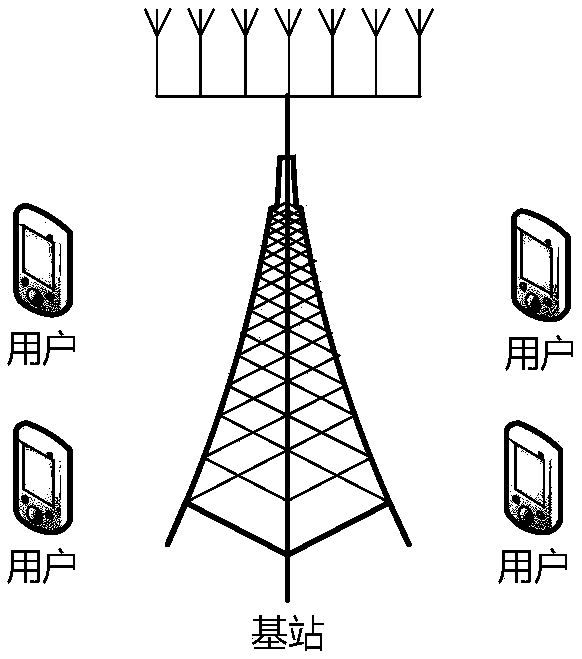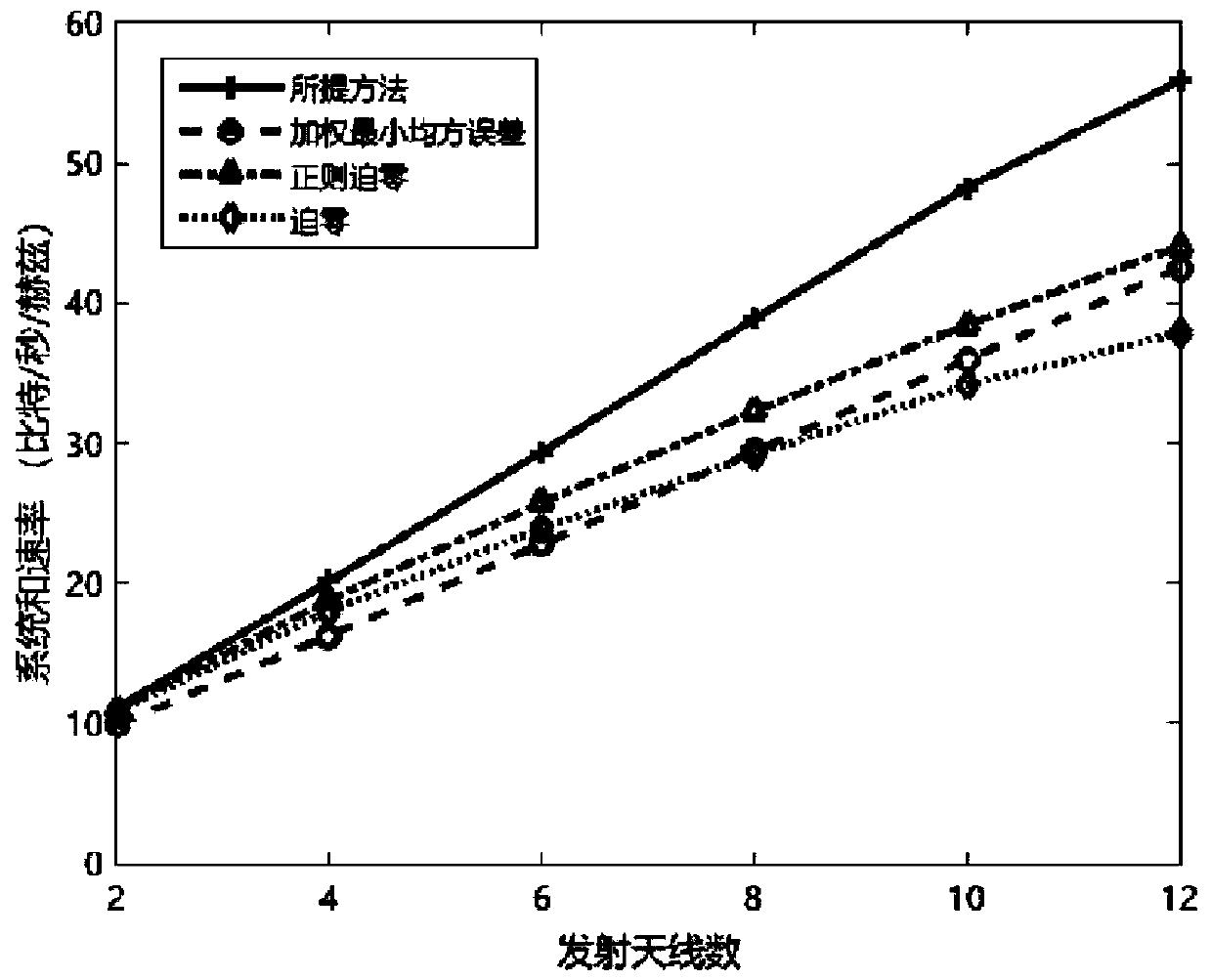Deep learning-based MIMO system beamforming matrix design method
A beamforming matrix and deep learning technology, applied in transmission systems, radio transmission systems, diversity/multi-antenna systems, etc., can solve the problems of large calculation delay, high algorithm complexity, performance discount, etc., and achieve the goal of reducing delay Effect
- Summary
- Abstract
- Description
- Claims
- Application Information
AI Technical Summary
Problems solved by technology
Method used
Image
Examples
Embodiment Construction
[0021] This embodiment provides a method for designing a beamforming matrix of a MIMO system based on deep learning, such as figure 1 As shown, assuming that the base station has N transmitting antennas serving K single-antenna users, the signal is transmitted from the base station to the user, and the channel matrix is denoted as
[0022] H=[h 1 , h 2 … h K ];
[0023] where h k is the channel vector formed by N transmit antennas and the kth user antenna. Our aim is to design the beamforming matrix W=[w 1 ,w 2 ,...,w K ], which maximizes the system and rate, that is
[0024]
[0025] in w k is the kth column vector of W, P max is the maximum available power.
[0026] Traditional algorithms rely on an iterative process. Although good performance can be achieved, the algorithm complexity is high and the calculation delay is large, so it cannot meet the needs of real-time services. However, some heuristic schemes, such as zero-forcing method and canonical zero...
PUM
 Login to View More
Login to View More Abstract
Description
Claims
Application Information
 Login to View More
Login to View More - R&D
- Intellectual Property
- Life Sciences
- Materials
- Tech Scout
- Unparalleled Data Quality
- Higher Quality Content
- 60% Fewer Hallucinations
Browse by: Latest US Patents, China's latest patents, Technical Efficacy Thesaurus, Application Domain, Technology Topic, Popular Technical Reports.
© 2025 PatSnap. All rights reserved.Legal|Privacy policy|Modern Slavery Act Transparency Statement|Sitemap|About US| Contact US: help@patsnap.com



